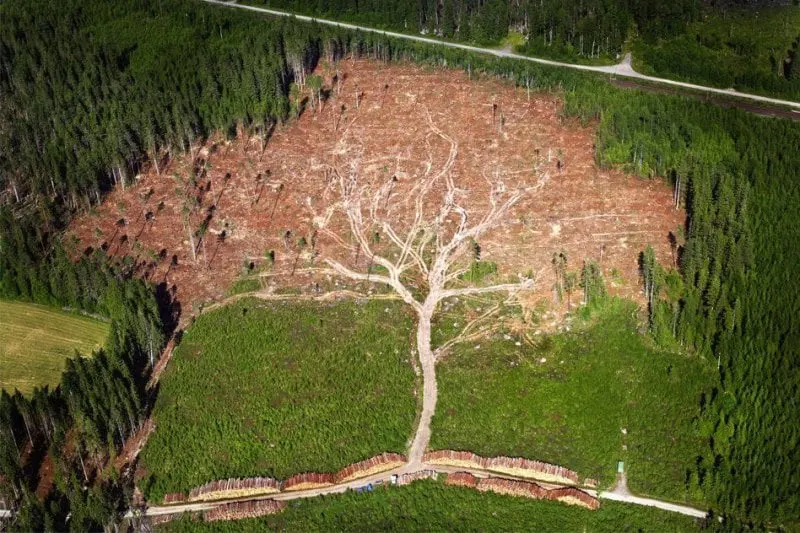Viewpoint: Here are cutting edge ways technology can help us increase farm outputs without using more land
Viewpoint: Here are cutting edge ways technology can help us increase farm outputs without using more land


The world has plenty of nutrients. They circulate between air, soil, sea, living plants and animals. Neither population growth nor meat meals remove them.
The Eat-Lancet report was criticized in 2019 for its solutions, but the most important was a credible message that the planet can provide sustainable food for a growing population.
It’s tempting to waste. Even in a threatening food crisis, it is ten to a hundred times more profitable to use land for asphalt and concrete, than for photosynthesis.
At present, it is probably five to ten times more expensive to produce sustainable protein than to import from countries that deforest.
We have possible solutions. Yield levels in normal grain production can be increased. We can choose from a nearly unlimited variety of organisms and technologies:
- Insects can convert food waste into high-quality protein, sugar and fat.
- We can capture and utilize CO 2 directly from the factory chimney and supply light and nutrients from air and water. It nourishes microorganisms. They carry out photosynthesis without using cultivated land, and circulate carbon, water and nutrients.
- We can refine twigs and chips, seaweed and grass into sugar and organic matter, extract nitrogen from the air and get yeast bacteria to supply protein.
[Editor’s note: This article was originally posted in Norwegian and has been translated and edited for clarity.]
This is an excerpt. Read the original post here.

 | Videos | More... |

Video: Nuclear energy will destroy us? Global warming is an existential threat? Chemicals are massacring bees? Donate to the Green Industrial Complex!
 | Bees & Pollinators | More... |

GLP podcast: Science journalism is a mess. Here’s how to fix it

Mosquito massacre: Can we safely tackle malaria with a CRISPR gene drive?

Are we facing an ‘Insect Apocalypse’ caused by ‘intensive, industrial’ farming and agricultural chemicals? The media say yes; Science says ‘no’
 | Infographics | More... |

Infographic: Global regulatory and health research agencies on whether glyphosate causes cancer
 | GMO FAQs | More... |

Why is there controversy over GMO foods but not GMO drugs?

How are GMOs labeled around the world?

How does genetic engineering differ from conventional breeding?
 | GLP Profiles | More... |

Alex Jones: Right-wing conspiracy theorist stokes fear of GMOs, pesticides to sell ‘health supplements’




 Viewpoint — Fact checking MAHA mythmakers: How wellness influencers and RFK, Jr. undermine American science and health
Viewpoint — Fact checking MAHA mythmakers: How wellness influencers and RFK, Jr. undermine American science and health Viewpoint: Video — Big Solar is gobbling up productive agricultural land and hurting farmers yet providing little energy or sustainabilty gains
Viewpoint: Video — Big Solar is gobbling up productive agricultural land and hurting farmers yet providing little energy or sustainabilty gains Fighting deforestation with CO2: Biotechnology breakthrough creates sustainable palm oil alternative for cosmetics
Fighting deforestation with CO2: Biotechnology breakthrough creates sustainable palm oil alternative for cosmetics Trust issues: What happens when therapists use ChatGPT?
Trust issues: What happens when therapists use ChatGPT? California, Washington, Oregon forge immunization alliance to safeguard vaccine access against federal undermining
California, Washington, Oregon forge immunization alliance to safeguard vaccine access against federal undermining 30-year-old tomato line shows genetic resistance to devastating virus
30-year-old tomato line shows genetic resistance to devastating virus The free-range chicken dilemma: Better for birds, but with substantial costs
The free-range chicken dilemma: Better for birds, but with substantial costs ‘You have to treat the brain first’: Rethinking chronic pain with Sanjay Gupta
‘You have to treat the brain first’: Rethinking chronic pain with Sanjay Gupta
